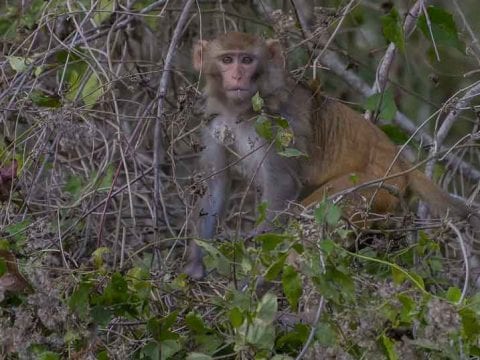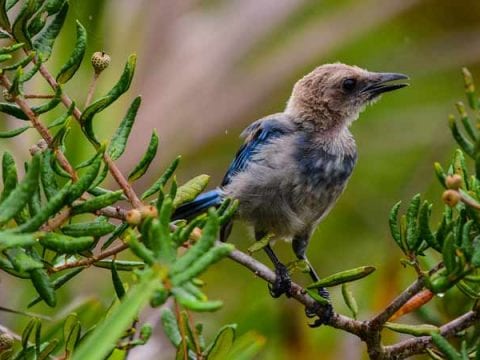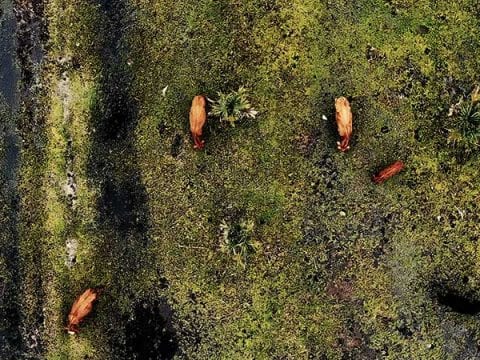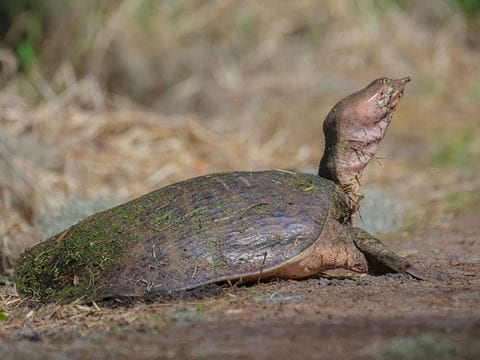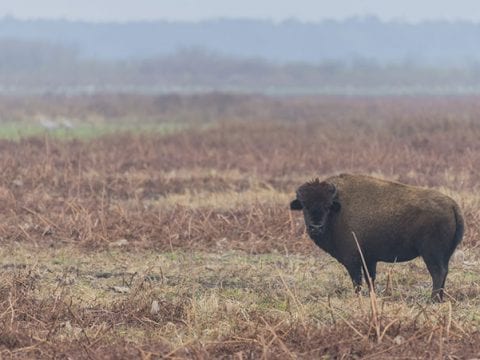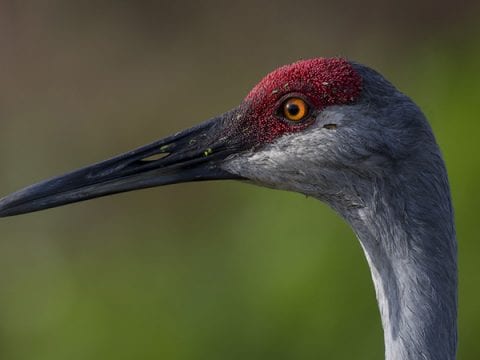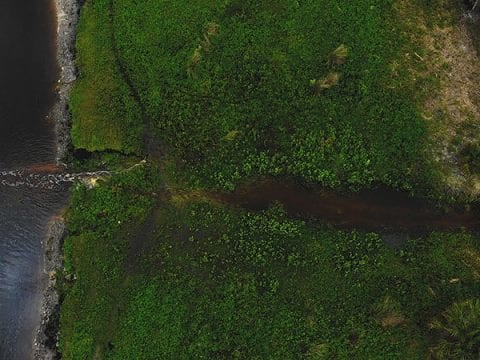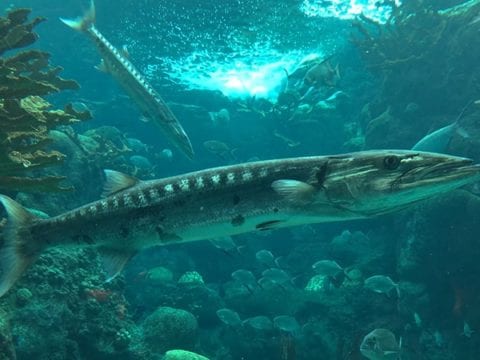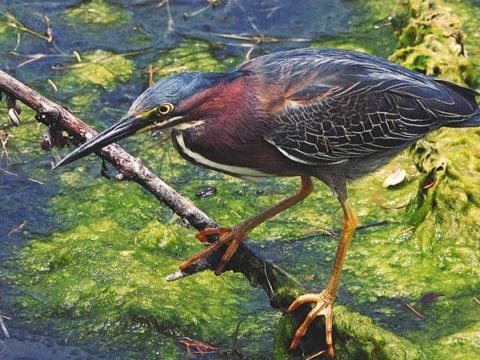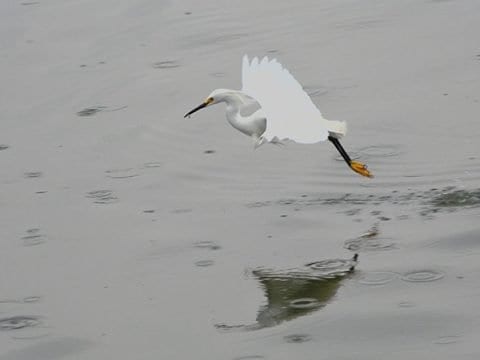Table of Contents
My Experience With Alligators
I spent part of my life living in Florida and I currently visit a number of times a year hiking there. Almost every time I’ve been out, I’ve run into an alligator. Only once have I had a gator crawl up to me and that was a very young one that had just left his mother and had probably been fed by a human in the past. Of all the times I’ve run into a gator, I’ve never once had one approach me in a threatening way. I give a lot of respect to these reptiles and they, for the most part, want to be nowhere near me when I encounter them.
My recent visit to Florida was during the mating and nesting season. As I hiked through a marsh, I could hear the growling sounds they make to get attention during the mating season. I try to avoid kayaking with gators during the mating season in Florida as they can get aggressive during this time. During my hike, I noticed that some trails were closed off and in the end, I found myself looking at an alligator nest. I’d actually never seen it once before. The picture I posted below in this article is of a nest almost on top of a trail. There is a Limpkin standing on top of the nest and you’ll notice a wildlife game camera on the bottom left side. The nest is being monitored by wildlife officials. I asked around as to why a gator would place their nest directly on the trail like this and I was told that because the water levels were so high in this area, the gators were forced to nest on the dry land.
Inside of the nest is the eggs. As the babies break open the eggs, they’ll make sounds and, when the mother hears this, will crawl over and begin carefully clearing a path for them to crawl out. Just outside of this picture, the mother is far left in the water waiting.
An Alligator Feeding Frenzy I Filmed At Gatorland
Alligator Reproduction & Nesting Facts
- Alligators are highly hunted animals. So much so, they were on the brink of extinction. Now, however, you can find them in nearly every body of water in Florida.
- Alligators in the wild usually live 35-50 years. In captivity, they usually live 60-80 years
- They are considered a renewable source and part of Florida’s increasing aquaculture industry.
- Male alligators will use infrasound while mating.
- Female alligators are very devoted moms and will stay near their nests at all times to protect their eggs from nest-raiding predators like raccoons, skunks, and opossums. The females will eventually have to protect their babies from male alligators who are preying on them too
- The gender of an alligator is determined entirely by what temperature the eggs are kept at.
- Due to hunting by humans, alligator breeding is hard in certain areas and therefore different zoos have set up an alligator breeding unit so that alligators can stay protected and off the endangered list.
- Baby alligators are born with an eye tooth that they use to crack their eggs. However, after a few days, it will disappear.
- Male alligators use a series of different grunts and groans to show a female that they are interested in mating. Alligators do not have vocal cords so instead, they use water to emulate the sounds of a grunt by sucking up the water and then blowing it out.
- Ultimately, it is the female who will decide if she wants to mate or not.
General Facts
- An alligator is a crocodilian within the genus Alligator of the family Alligatoridae
- Often confused with a crocodile because of the close relationship between the two
- Member of the order Crocodylia
- There are two different types of alligators, the American alligator, and the Chinese alligator.
- First appeared during the Palocene epoch 37 million years ago
- Alligators are social creatures and like to associate in groups that are referred to as congregations. These are the groups that can be found basking in the sun together.
- They cannot control their temperature internally so when they are cold, they sunbathe to warm up and when they are hot, they go for a swim to cool off.
- Alligators use the water to find food, hunting down fish and mollusks while also watching the land for birds and small mammals. They are carnivores but they will eat fruit as well.
- There is no average lifespan for an alligator currently measured. In 1937, an alligator was brought to Belgrade Zoo in Serbia from Germany and is still alive today at 80 years old.
- The name alligator comes from the word el lagarto, which is a Spanish term that means “the lizard”. Spanish explorers settled in Florida had named the alligator. However, English spelling changed the word to other names which included allagarta and alagarto
- They are very proficient in the water and use their tails to swim quickly.
- The largest Alligator ever found on record measured 19.2 feet in Louisiana
- Alligators can swim at 20 mph and they can run on land at 11 mph.
- Chinese alligators are considered critically endangered
This video is of a baby alligator hunting for food. He’s big enough to have left his mom so he’s on his own now. What he’s doing is using the current to let any minnows, frogs, crickets, etc. flow through the drainage pipe. He’s got his mouth open so when something does hit his mouth, he can clamp down and get a meal.
History
Alligators are actually amazing reptiles and they have basically remained unchanged since the time of the dinosaurs. They have been hunted for thousands of years. In fact, the first residents of Florida used to hunt alligators for their meat and their hide. The teeth of alligators were believed to be magical medicine against snakebites. It was believed at one time that alligators were immune to snakebites since their hide is so thick. Alligator leather is also very popular and Native Americans make leather items such as drums with it.
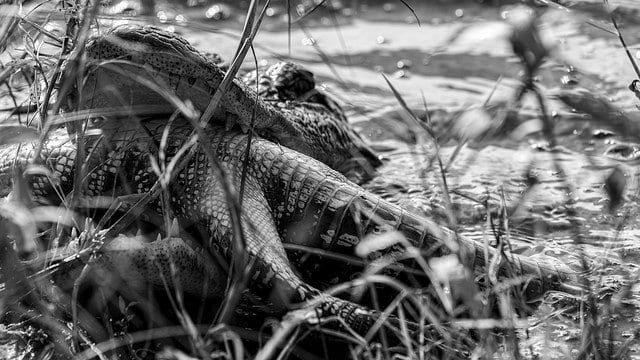
I hid in the bushes and took this photo of an alligator killing and eating another alligator. During alligator mating season, the males become aggressive and this takes place often. I was lucky to capture this so close.
Courting
Alligators only breed in the spring, once a year. This is when they begin their courting rituals. When two alligators have paired up, they will start to swim together, rub each other, touch each other, blow bubbles in the water, become vocal with one another and touch noses. These are all signs that the two alligators have chosen to mate with one another. This can happen within the water or even out of the water but the mating itself will happen in the open water.
While early spring brings on the courting rituals, late springs initiate the male’s need to establish his territory. Males will begin to slap the water with their heads and make loud grunts. There are often times that males will group together and start grunting in sync with each other. This is what is known as a bellowing chorus. Male alligators will also group together and display alligator dancing to attract females to them. Males do this so that they can attract females to them. While males seem to “rule their roost” so to speak, it is the female who will decide who she will mate with. Every male alligator is out to protect his own ability to court, mate and “impregnate” a female alligator and this can turn into a full-on brawl at times.
During their courtship, the mating pair are seen together usually basking in the sun. The male will always be bigger than the female.
It is believed among the animal world that alligators are polyamorous but a new study may have finally proven that not to be the case at all. In fact, alligators appear to be loyal to their mating partners. Interestingly enough, this study shows that at least 70 percent of female alligators chose to mate with the same alligator time and time again, over a period of many years. However, there are still many male alligators out there that will mate several females at once.
Reproduction
Sexual maturity is dependent more on the size of the alligator versus its age. For example, when an alligator is sexually mature they will have reached a length of six feet or more. This for both female and male genders. Their length determines their maturity for reproduction. Usually, alligators reach this length in about ten to twelve years after they have been hatched. This depends mostly on their environment however, some will sexually mature faster.
Once the male alligator has courted the female, he will then fertilize the eggs within her with his mammal-like phallus which is usually inverted inside its cloaca.
Once a male and a female have mated, they will then move into a marshy area where the female will start to build her nest of mud, vegetation, and sticks. After this, she will deposit her eggs and provide enough nesting material to keep the eggs warm. These eggs, as much as 45 or as little as 10 are generally laid between June and July.
The eggs will undergo an incubation period of 65 days and during this time. The temperature of the nest will depict what sex the baby alligators will be. During the incubation process, the female will act as a guard to make sure they are well protected. The male alligator will stand guard as well, protecting his territory from all predators. Raccoons have known to be nest raiders when it comes to alligator eggs and can completely destroy a nest if given the chance.
While mating starts in late spring, by the end of June the mating pair will separate so that the female can start to build her nest and prepare herself for guarding for the best months to come.
Nesting
Now that it is time for the female alligator to build her nest. She will find a very marshy area near isolated ponds and start by shaping a mound. Mounds are typically made with mud, plant pieces, sticks, and grass. Once the female has built her nest, it will stand three feet in height and have a 6-foot diameter. At this point, she will lay her clutch of eggs, usually, between 30-50 of them, about 3-14 inches deep into the nest. Alligator eggs are hard and white and just slightly bigger than a large chicken egg. Once the eggs have been laid, the female alligator will cover the nest with vegetation so she can lay near while the warmth of the gasses produced from rotting vegetation, incubates the eggs. She will stay very near her eggs for 65 days until they hatch.
During the incubation period, the mother alligator has to watch carefully over her the eggs because nearby predators are always lurking. Raccoons, skunks, and opossums are always on the prowl to raid nests for eggs. Fewer than 70 percent of alligator eggs survive due to predators and weather conditions.
Picture Of An Alligator Nest
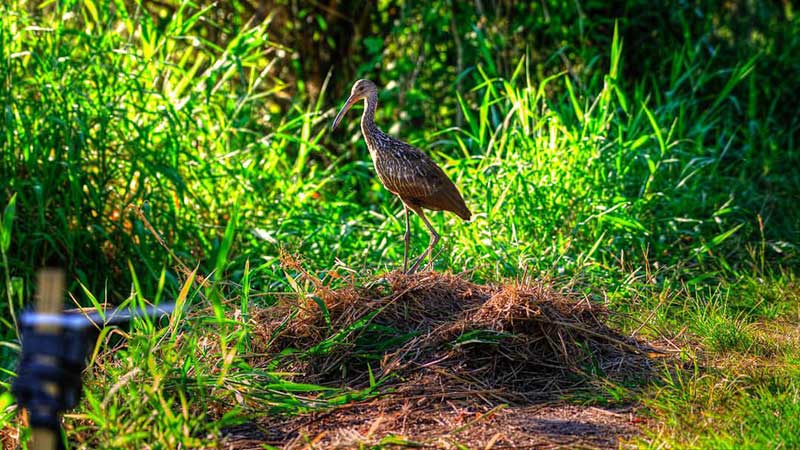
This is a picture of an alligator nest and a camera to monitor the happenings for research. In this photo, you’ll find a limpkin standing on top of the nest and as I watched, the limpkin was just walking over it to get to the water just on the other side. It is important to stay away from any piles of rotting grass when out around natural areas that are known for alligators. The mother alligator will become very aggressive if she believes that her babies or eggs are in danger.
Fun Fact
Alligator eggs, unlike other reptiles, will change in gender depending on their environment. Eggs kept at a temperature lower than 86°F degrees withhold a female while eggs held at a temperature of 91.4°F or more will hold a male. Temperatures in between will result in both males and females.
Hatchlings
The eggs will hatch in the late summer. The hatchlings can do this due to the sharp tooth that forms on their snout for the very purpose of cracking the egg. This tooth will disappear in a matter of days. The mother alligator will know that her babies are ready because they will start making high-pitched sounds to show their entry into the world. The female alligator will uncover her nest. If a hatchling is having trouble hatching from its shell, the mother alligator will roll the egg around in her mouth until the egg cracks. She will then usually carry them down to the water so that they can feed themselves. In the water, they will be able to catch snails, insects, tadpoles, minnows, and crayfish, which are all small enough for them to eat.
They will, however, return to the nest where the mother will protect them for the next two years. This helps to keep them safe from the harsh weather and predators. At this point, birds, male alligators and even humans become the biggest threat. This is particularly due to humans hunting for hatchlings but due to the outlawing of alligator hunting, the survival rate for hatchlings has increased.
After they have reached two years of age, the hatchlings will move into a gator hole or they will be chased away by their mother. The mother alligator will have to mate again and therefore, she has to keep her nest free from all predators, including her prior hatchlings.
Within their first five years, they will grow 9-10 inches per year and so will their diet. They will start to eat turtles, raccoons, carrion, turtles, frogs, fish and snakes. After the alligator’s initial rapid growth rate, the alligator will begin to only grow little by little for the rest of its life.
The hatchlings will range between 6-8 inches when they are born. Once they have hatched they break off into groups known as “pods”. They will stay within these pods so that their mother can protect them, you will find them sometimes on the mother’s or back. They are very small targets when it comes to predators but once they reach 4 feet, they have better protection and their only real predator becomes humans.
By the time they have reached their 6th year, the hatchlings have reached maturity, although they will not be able to mate until they have reached 6 feet in length. This usually occurs by year 10 or year 12.
Fun Facts
- Alligators can be found in zoos all around the United States. You can also find alligator breeding farms that allow tours of alligators and their hatchlings.
- Alligators that are reared in captivity will grow twice as fast as those that are reared in the wild. Their survival chances are much higher as well.
Alligator Farming
Alligators are primarily hunted by humans for their meat and for their skin that can be used to make shoes, bags and belts. Due to the popularity of hunting them, alligators were added to the endangered list in 1967 but were taken off in 1987 due to the laws that were created to stop illegal alligator hunting.
However, because alligator hide and meat are such marketable products, alligator farming has become a very lucrative business. Alligator farming mainly exists in Florida, Georgia, Texas, and Louisiana. All four states produce 45,000 alligator hides annually and their production of meat is quickly becoming a million-dollar industry.
Alligators tend to live longer lives in captivity than they do in the wild. There have been many attempts to preserve the life of an alligator but high temperatures and low food create a negative effect on the preservation efforts. High temperatures and low food create a growth problem for alligators, they cannot grow to sexual maturity which creates a reproduction problem. This causes concern when it comes to alligators appearing back on the endangered list.
Alligator Attacks
All this talk about seeing alligator hatchlings may have put you in the mood to see it in real life. Use these tips to avoid an alligator attack:
Never go swimming in a place that is known for alligators. Learn as many facts as possible to keep away from places where alligators roam. If you plan to visit a region that is known for alligators such as Louisiana or Florida, ask some local residents about which bodies of water are safe and which ones have more alligators. You can also check online to find out where more alligators are located and which areas are prone to attack.
Most importantly, do not try to feed the alligator. This goes without saying or should but there are people who have certain beliefs about alligators, such as if you keep their mouth closed, they won’t hurt you. This belief is true, however, why risk it? If a person missteps just a little, the alligator has enough brute strength to take a person down.
While hiking and filming alligators in Florida, I ran across a 5-foot male gator that had a nasty bite from another male. Males are territorial and the one that bit this one must have been much bigger to do this kind of damage. You’ll notice the tip of his snout has been torn up by a bite.
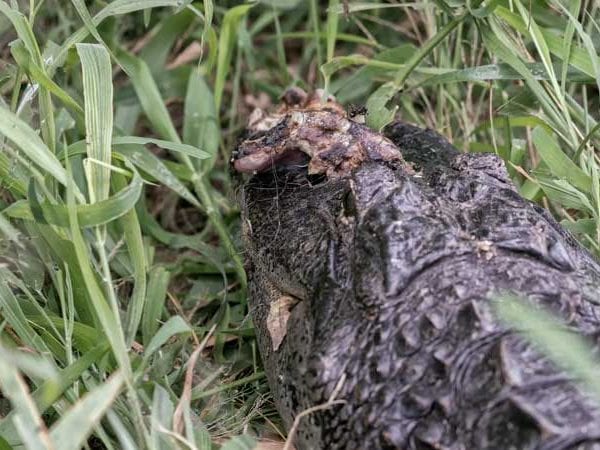
A picture of an injured alligator that was attacked by another alligator during the mating season.
Identification
An alligator is a large reptile with a pointy snout and is often confused with a crocodile who looks very similar. A big difference between the two is their snout. An alligator had a broad snout while a crocodile has a narrower snout. Alligators have more of a black hue to their skin while crocodiles are a gray-green color. When a crocodile’s mouth is closed, you can only see their fourth tooth while you can see a line of a teen when an alligator’s mouth is closed.
Behavior
Larger male alligators are typically solitary and they like it that way. As far as smaller alligators, they like to stay in large numbers together. They are very territorial and when it comes to their territory, both males and females will work together to protect it. They move on land by either “high walking” or “sprawling”. High walking consists of walking on their four limbs in a forward motion with their belly up in the air. They have also been seen as rising up and balancing on their hind legs and taking a semi-step forward as part of a forward or upward lunge. They cannot walk on their hind legs for long distances.
Alligators have a heavy body but a slow metabolism and can move in short bursts of speed. They prey on smaller animals that they can kill or even eat in just one bite. For larger animals, they can kill them by dragging them into the water where they drown them and then eat them. For really big animals or even humans, alligators will implement the death roll. This is where they use the weight of their body and their experience in the water to create a roll the immobilizes their prey. However, they need their tail to implement this correctly. If they do not have the use of their tail, the death roll is useless. The power behind an alligator aside from their huge body is their jaw. Once they have obtained a hold on their prey, there is no releasing it unless one is able to get to the weak part of the jaw that easily releases the hold. As long as the jaws remain shut, it is fairly easy to transport an alligator from place to place, it is their jaw that most animals and humans fear.
Alligators look massive and they look mean but they are fairly timid when a human walks up to them. Because of this, some humans provoke alligators which leads them to become attacked. It is best to leave alligators alone. Some humans will feed alligators when they see them much like feeding ducks at the park. This can be harmful to the future because alligators will no longer fear humans because they are getting from them. They will associate the two and look at humans as food, leading to far more attacks.
Size
American Alligator
Length
- 13.1’ (up to 14 ft.)
Weight
- 790 lbs. (up to 990 lbs.)
Chinese Alligator
Length
- 6.9’
Weight
- 99 lbs.
Habitat
American alligators live in the United States and can be found from North Carolina to Texas. They are partial to slow-flowing ponds, rivers, lakes, and swamps.
Chinese alligators live in eastern China. They can be found near the Pacific Ocean, in a small basin in the Yangtze River. They can also be found in rivers, ponds, lakes, and swamps as well.

